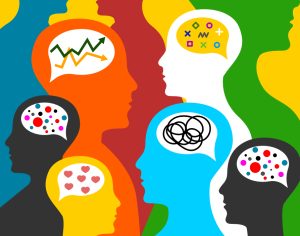IR35 is a regulation that has been looming over businesses’ heads since its postponement last year. Mandating a shift in how external workers (i.e. contractors, freelancers and Personal Service Companies) are hired and retained, it would be easy to view this as yet another headache for businesses after a historically turbulent year. Particularly for those smaller businesses who may not have the same levels of expertise to navigate this incoming tax rule.
However, by taking a step back, there is the potential to view IR35 implementation as an opportunity. This is particularly the case amidst the backdrop of the changing world of work. Before the pandemic, external workers accounted for nearly 42 percent of organisations’ overall workforce spend. For small businesses, just a few years ago, 67% of SMEs said that they supplement their core payroll with freelance assistance, meaning that about nearly seven out of 10 SME managers now work with more freelancers than staff.
The freelance trend gained momentum following the 2007-2009 recession, so if history is to repeat itself, we’re likely to see a higher continued dependence on the freelance workforce as businesses look to recovery following this more recent downturn. Economists also expect a stronger and faster economic recovery than after the previous financial crisis which will drive demand for an agile workforce. Therefore, it’s important for businesses to not only get their heads round IR35, but also leverage its implementation to better tap into the vast and highly skilled freelance talent pool as the need to implement more flexible hiring plans post-Covid emerges.
A refresher on understanding IR35
It’s worth a quick refresh of what IR35 stipulates. A simple way of understanding it is by likening it to how you might hire a contractor to build an extension to your home. You may search the internet for builders and request quotes, working out what aspects are important to you, like price, experience and availability. Once you had selected a builder, you’d agree on the work to be done, the timeline and the price. You would then pay them the final amount due when the job was done, or if not completed to standard, ask them to revisit, finish the job and then settle the bill.
You wouldn’t, for example, provide the builder with detailed instructions on how to conduct the extension every step of the way. Nor would you get the builder to work on another unrelated project at the same time, like managing the gardener. And you definitely wouldn’t pay the builder if it the job wasn’t complete when the project came to a close.
This analogy provides a good guide for how employers need to think about hiring true freelance workers and appropriately categorise the remaining temporary workforce. They should approach the freelance temporary workforce as they would if they were having an extension built for their home. Once businesses have this in check, they can move from understanding whether they are compliant, to working out how to use IR35 implementation to propel their business to success.
Moving from compliance to competitive advantage
So how can IR35 shift from being solely a compliance requirement to serving as a real opportunity for positive change? According to our recent research, more than half of executives specifically credit the external workforce with helping their businesses to recover from downturns. Paired with the fact that SMEs are already leveraging the freelance community, it will be even more important for businesses to be able to tap into the external talent market as they look to recovery.
But, with more businesses looking to incorporate the skills of freelance workers, competition will be high and what we may see is freelancers in the driving seat, selecting which organisations are most attractive to work with. It’s therefore down to the business to prove that they are the best option, and this all starts at the procurement stage. Addressing IR35 should be the turning point for rethinking entire workforce procurement management systems in order to not only ensure compliance, but create a top tier procurement function that makes working for a business the most beneficial it can be from a freelancer’s perspective.
The key to attracting and optimising high-quality talent is in digitally transforming procurement. By looking to cloud-based solutions, businesses can have access and reliance on data, analytics and automation that will help them to make better-informed decisions and respond faster to emerging risks.
But what’s arguably more important now than ever is the service it then provides to the freelancer. Though highly skilled external workers lend businesses the flexibility they need to achieve resilience in times of disruption, according to recent research they are often undermanaged, thus constraining organisations from reaping full value from their ample talents. Through the digital transformation of external workforce management, however, businesses gain critical visibility, enabling them to manage with rigor and improve return on investment. By actively managing their external workforce with the transparency and real-time insights made possible by cloud-based applications, businesses can expand value, strengthen compliance and reduce risk.
Put simply, if a freelancer knows that they are going to be contracted quickly, with all relevant checks made and managed well with fast payment, the chances are, they will choose that business to work with over another. For the business, this means securing the top talent that is so important to their recovery and future success.
By re-evaluating workforce management tools as a whole and embracing a digital solution, IR35 compliance becomes something that is simply looked after by the external workforce management solution. It moves from being an arduous compliance issue to an important moment in time for businesses to catalyse broader workforce procurement change and reap much broader benefits.
“
Share via:








































